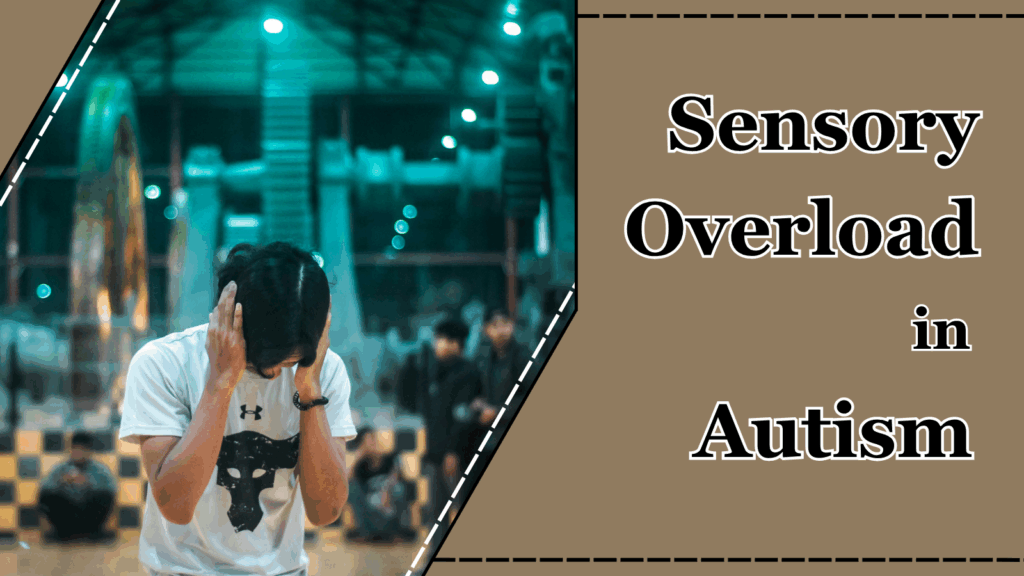
What is Sensory Overload?
Sensory overload, also known as hypersensitivity and overstimulation, is an unpleasant, yet familiar experience for many autistic individuals. According to Medical News Today, 80-100% of children with autism find themselves struggling with the issue. Sensory overload is often characterized by a spontaneous, overwhelming emotional reaction towards stimuli that are deemed unalarming for neurotypical people.
It is difficult to capture the exact experience of overstimulation with words. Dr. Ben Belek once explained on the topic of sensory overload that “language is inadequate when attempting to relay the meaning of being autistic”.
Or perhaps you can imagine yourself as Superman. You are trying to help Batman out by making out the Riddler’s muttered words. All of a sudden, the blaring horns, the mundane creaking of train tracks, the hasty footsteps of passers-by have all declared themselves your enemy. That, right there, is hypersensitivity.
Hypersensitivity may present itself in ways that are not instantly or easily recognizable. An ASD individual experiencing sensory overload may sometimes show clear signs of distress like covering their ears or eyes. However, a subtle, yet active avoidance towards particular venues or people may also point to an oncoming overstimulation episode.
Sensory overload is just one of the many traits that autistic individuals may exhibit. Check out our blog to learn more about the symptoms and presentation of autism.
What Triggers Sensory Overload?
Sensory overload can occur with any kind of stimulus. It is known that environmental stimuli are one of the most common triggers for hypersensitivity meltdowns. These environmental stimuli can range from visual, auditory, olfactory, gustatory to tactile.
Common examples of environmental stimuli include:
- Overly bright lights
- Police sirens
- The scent of bleach
- The flavor of chili peppers
- Taps on the shoulder
Sensory overload is also more likely to occur when multiple triggering stimuli are present at once. A hollering crowd dancing to flashing lights poses two different kinds of stimuli simultaneously. Scenarios like these can be especially daunting for those prone to sensory overload.
Sensory overload and cognitive overload are both phenomena commonly observed in ASD individuals. The two are distinct notions, but they share inextricable ties. Someone who is already suffering from cognitive overload may experience heightened sensitivity towards sensory stimuli.
With that idea in mind, caregivers of autistic individuals must keep an eye out for stimuli nearby and address them accordingly.
Coping with Sensory Overload
Some parents of autistic children may know that adults with ASD tend to be less susceptible to sensory overload. But before we decide to sit back, relax and cross our arms, we must take a look at the bigger picture.
Sensory overload is not a shoe. Individuals with ASD do not simply grow out of hypersensitivity. For the most part, autistic adults are less likely to experience sensory overload because they have acquired various coping skills.
Coping skills may include:
- Practicing Breathing Exercises
Breathing exercises and meditation sessions can effectively redirect a person’s attention from potential triggers. A stable breathing pattern may also prevent further complications like panic attacks.
- Identifying Triggers
Triggers are not universal. Actively recognizing what one’s personal triggers are is the first step to creating safe spaces.
- Following Routines
Predictability is an invaluable ally in the battle against sensory overload. Routines can help those with autism find comfort in what is otherwise a chaotic environment.
Autism Resources
Do you want to be the hands that shelter autistic children? Do you want to be the voice that calls for inclusion? Knowledge is the precursor to change. One of the key missions of Autism Today is to provide the world with valuable autism resources.
This is why we created Exceptional Resources.
Life is hectic, but the world of autism is vast. Parents and educators of ASD individuals should not have to visit a hundred different sites to get what they need. On Exceptional Resources, you will find everything you need to take care of those with autism.
Check out Exceptional Resources today and help yourself to autism resources of premium quality.


